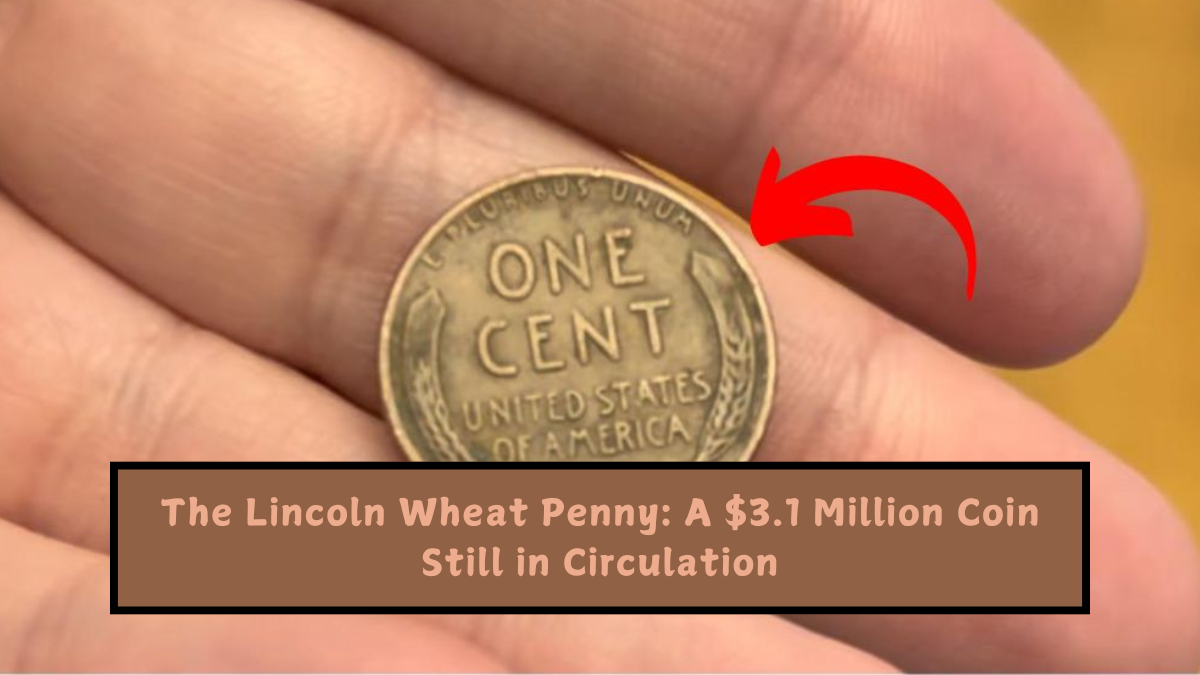The Lincoln Wheat Penny, first introduced in 1909, has long been a familiar part of American currency. For decades, these small one-cent coins circulated widely, unnoticed by most people. However, beneath their seemingly ordinary appearance lies a fascinating story of history, rarity, and unexpected value. While the vast majority of Lincoln Wheat Pennies remain in everyday circulation and are worth just one cent, a few select specimens have become highly valuable due to their historical significance, unique minting errors, and extraordinary condition. One such coin, the 1943 copper Lincoln Wheat Penny, recently grabbed headlines when it was valued at a staggering $3.1 million, capturing the attention of collectors and investors alike.
This blog delves into the captivating journey of the Lincoln Wheat Penny, its history, rarity, and why some of these coins have reached such extraordinary valuations.
The History of the Lincoln Wheat Penny
The Lincoln Wheat Penny was first introduced in 1909 by the United States Mint. It was designed by Victor David Brenner and featured a portrait of President Abraham Lincoln on the obverse (front) side of the coin. On the reverse (back), two wheat stalks are depicted, symbolizing America’s agricultural heritage. This design was chosen to commemorate the 100th anniversary of Lincoln’s birth and quickly became a beloved symbol of the nation.
The original plan was to produce these pennies only in 1909, but due to their popularity and demand, the Mint decided to continue minting the coins until 1958. The Lincoln Wheat Penny thus became a staple in American currency for nearly five decades.
In 1959, the Lincoln Wheat Penny was replaced by the Lincoln Memorial Penny, which featured the Lincoln Memorial on the reverse instead of the wheat stalks. However, the Lincoln Wheat Penny continued to capture the imagination of coin collectors, thanks to its rich history and design.
The 1943 Copper Alloy Penny: A Rare Minting Error
While most Lincoln Wheat Pennies from 1943 were made using steel to save copper for wartime needs, a few rare specimens were accidentally struck using leftover copper-alloy planchets. Due to World War II and copper shortages, the U.S. Mint switched from using copper to zinc-coated steel for penny production that year. However, a few copper-alloy planchets were mistakenly used, resulting in a small number of copper pennies being produced by accident. These copper pennies are incredibly rare, and one in particular—the 1943 copper Lincoln Wheat Penny—is among the most sought-after coins in existence.
This error coin quickly became a target for collectors due to its unique characteristics. The 1943 copper Lincoln Wheat Penny is one of the rarest coins to have ever been minted, with fewer than 20 believed to have been produced. Fewer than 10 are known to be in circulation today, making them exceedingly valuable.
Also Read: Rare Coins That Could Make You $10000 Richer – Hidden Treasures to Watch For
Rarity Behind the 1943 Copper Penny
Only a handful of 1943 copper Lincoln Wheat Pennies exist, making these coins incredibly rare and highly prized by collectors. Experts estimate that only around 20 of these copper pennies were accidentally minted, and fewer than 10 of them have survived. This rarity, combined with the historical significance of the coin, drives its astronomical value.
The coin valued at $3.1 million was sold at auction in 2010, setting a world record for the highest price ever paid for a Lincoln Wheat Penny. The transaction underscored the growing interest in rare coins, particularly those with unique and historical importance.
Why Are Rare Coins Like the 1943 Copper Penny So Valuable?
Rare coins, like the 1943 copper Lincoln Wheat Penny, become valuable for several reasons. First and foremost, scarcity plays a significant role. Coins that were minted in limited quantities or had unique characteristics are often in high demand among collectors. Additionally, coins that are in excellent condition, free from wear and tear, hold greater value than those in poor condition.
Errors during the minting process, such as the accidental use of copper planchets for the 1943 pennies, further increase a coin’s value. Collectors and investors seek coins with minting errors because they are considered unique and historically significant.
The Lincoln Wheat Penny in Modern Circulation
Despite the incredible value of certain rare Lincoln Wheat Pennies, most of these coins are still found in circulation today and remain worth just one cent. In fact, many people who come across a Lincoln Wheat Penny in their change may not realize the potential value it could have. However, it’s important to note that finding a 1943 copper penny or any other rare Lincoln Wheat Penny in everyday circulation is extremely unlikely. Most of these coins are kept in private collections or stored in numismatic vaults.
Conclusion
The Lincoln Wheat Penny, particularly the rare 1943 copper version, showcases how an ordinary coin can become a highly sought-after collector’s item. With its rich history, unique design, and rare minting errors, the Lincoln Wheat Penny continues to captivate the imagination of collectors and investors alike.
While most of these coins still circulate as one-cent pieces, the value of rare specimens like the 1943 copper penny demonstrates the enduring appeal of numismatics and the hidden treasures that may lie within our everyday change.
FAQs
How can I determine if a Lincoln Wheat Penny is valuable?
To determine if a Lincoln Wheat Penny is valuable, check for signs of rarity, such as unique minting errors, limited production years, or coins in excellent condition. Consulting with a numismatist can help you accurately assess its worth.
Why was the 1943 copper penny so rare?
The 1943 copper penny is rare because the U.S. Mint usually used steel for pennies during that year. A few copper-alloy planchets were accidentally struck, making these coins highly sought after.
Where can I find more information about Lincoln Wheat Pennies?
You can find more information about Lincoln Wheat Pennies through numismatic websites, coin collector forums, and by consulting with professional coin dealers and numismatists.

